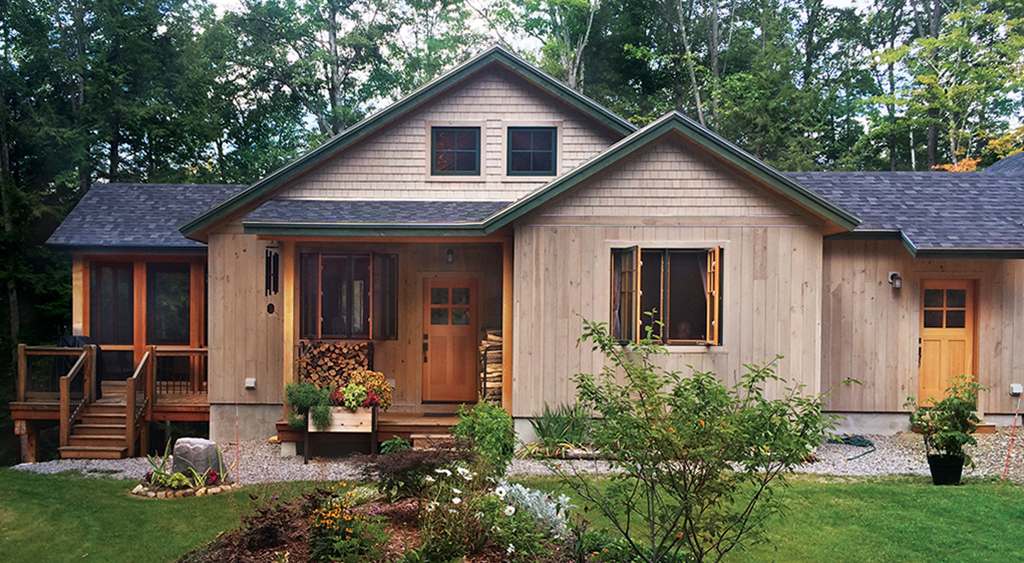We recently did a blower door test on a Xyla in northern New Hampshire to measure its air tightness—i.e., how “leaky” it was. The result was .38ACH@50 pa, which is well under the rigorous Passive House standard of .6 and almost seven times as tight as the strictest building code.
“ACH” stands for air changes per hour…how many times the inside air is replaced by outside air in an hour. “50 pa” stands for the pressure used during the test and roughly equals the pressure of a 20 mph wind. The lower the air changes per hour, the more airtight a house is.
While most of us understand the importance of the R-value of insulation for energy efficiency, minimizing air infiltration is just as important.
If a building is inherently leaky, adding more insulation won’t necessarily help all that much. On the other hand, by reducing air infiltration, you can achieve the same high performance with less insulation.
We believe in “optimizing” not “maximizing.” In the case of energy efficiency, we’re always looking for the sweet spot between up-front construction costs and long-term savings. Thickening walls and adding insulation is expensive—in both time and materials. So the return on that investment diminishes rather quickly after a certain point.
Minimizing air infiltration, however, mostly involves carefully sealing seams and joints with relatively inexpensive tape and gaskets, In the case of the Xyla we tested, the result came in at about 30% better than the Passive House standard.
By the way, air tightness and air quality are also related because air infiltration (and exfiltration) can cause moisture to build up in walls and roofs, which can lead to mold. All of our homes are built with mechanical ventilation systems, so we’re able to ensure healthy indoor air, without sacrificing energy efficiency.
To learn more about Passive House, read our Introduction to Passive House Principles and Design.






